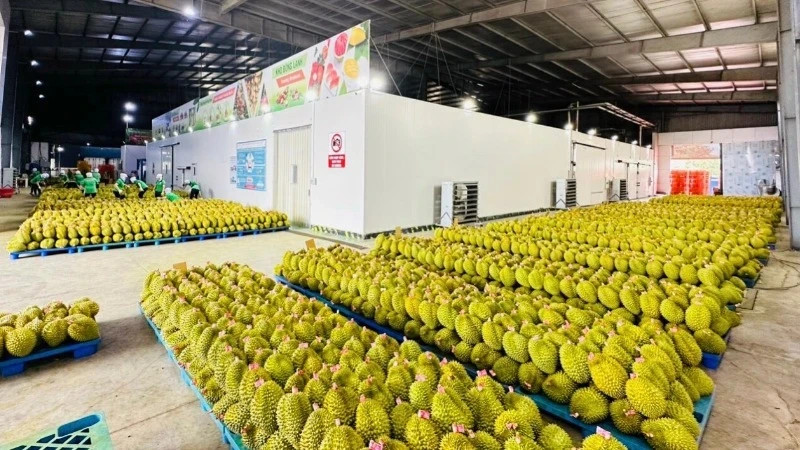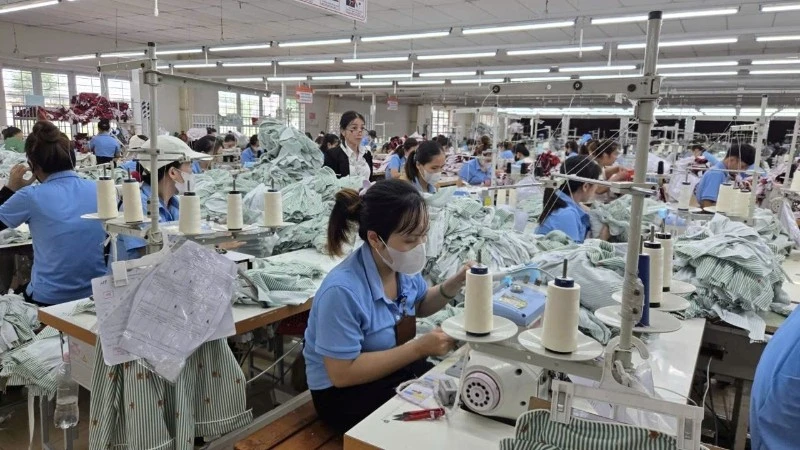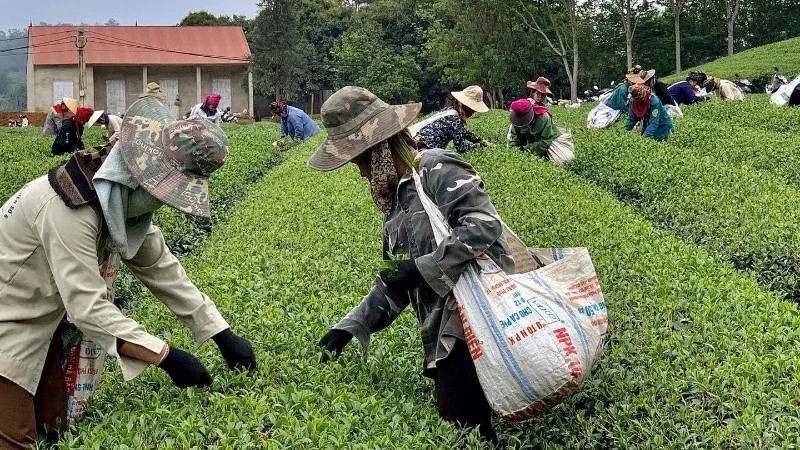Vinafruit General Secretary Dang Phuc Nguyen said that China, Thailand, Hong Kong (China), and Japan are the main import markets for Vietnamese durian.
Accordingly, China leads with more than 90% of the total turnover. In the first 11 months of 2024 alone, China imported more than 2.8 billion USD of durian from Vietnam, an increase of 43% over the same period in 2023. Thailand ranked second, importing about 177 million USD, an increase of 82% over the same period in 2023.
The Hong Kong (China) and Japanese markets also recorded growth of 16% and 85% respectively compared to 2023. It can be said that 2024 is a bumper year for durian, contributing significantly to bringing the export turnover of fruits and vegetables to about 7.2 billion USD.
In 2025, durian exports are forecast to continue to grow as businesses have more time to prepare conditions according to the provisions of the protocol on phytosanitary requirements and food safety for frozen durian exported from Vietnam to China.
Vietnam's frozen durian is allowed to be imported into China, including whole durian fruit (with shell), pureed durian (without shell) and durian pulp (without shell).
Exporting these products will help businesses and growers make the most of raw materials, especially those that do not meet the requirements for appearance for fresh export, thereby further increasing export turnover.
Meanwhile, according to data from Chinese Customs, durian consumption in China accounted for 91% of global consumption in 2023, showing the great potential of this market. In the first 10 months of 2024 alone, China imported approximately 1.5 million tonnes of durian, worth nearly 6.68 billion USD, up 10.1% in volume and 4.4% in value over the same period in 2023.
Therefore, there is still a lot of room for Vietnamese durian in the Chinese market. Currently, Vietnamese durian is assessed to have abundant output, harvested year-round, which is an advantage to stabilize export supply.
The important thing is that Vietnam needs to ensure quality food hygiene and safety to compete with durians from other countries in the Chinese market, such as Thailand, Malaysia, and the Philippines.
According to the Import-Export Department under the Ministry of Industry and Trade, to protect its market share, Thailand is focusing on strengthening quality control and standards, addressing issues such as soft durians and pests. Innovating new durian varieties to suit consumer tastes also gives Thai durians a competitive advantage in the Chinese market.
On the other hand, the China-Laos railway has significantly reduced the cost and transportation time of Thai durians, improving the competitiveness of the product. Meanwhile, from the end of the third quarter of 2024, Malaysia has also officially exported fresh durians to China, previously the country mainly exported frozen durians to the Chinese market. Thus, the market share of Vietnamese durian in China will have more clear competition from 2025.
According to Nguyen Quoc Manh, Deputy Director of the Department of Crop Production under the Ministry of Agriculture and Rural Development, the total area of durian in the country is currently about 155,000 hectares, and the total output is estimated at 720,000 tonnes.
With an average yield of about 17 tonnes per hectare each year for durian orchards, many orchards reach 25-30 tonnes per hectare. In the current favourable consumption market situation, the selling price has been high for many years, durian trees have been and are providing income and economic efficiency several times higher than other crops.
However, this also causes a phenomenon of rapid development in the area, leading to consequences such as supply exceeding demand, affecting the productivity and quality of durian, thereby greatly affecting export activities.
Therefore, to maintain the growth momentum of durian exports in 2024 and continue to make breakthroughs in 2025, key growing localities need to determine the scale of concentrated production areas in the planning scheme and link the development of growing areas with product preservation and processing facilities.
Localities need to organise durian production according to the orientation of scale and location, reducing spontaneous development, especially in areas with unsuitable climate, land, and irrigation conditions, and areas affected by drought and salinity in the dry season.
At the same time, it is necessary to review, develop and promulgate standard procedures for the cultivation, harvesting, and production of durian in different seasons, adapting to climate change according to key production areas. It is necessary to perfect the system of related standards for managing durian varieties and products.
In addition, localities need to develop and implement key agricultural extension programs for durian cultivation, the establishment of growing areas, value chain linkage, traceability to meet export requirements, prioritising contents such as synchronous application of advanced cultivation and harvesting techniques in the direction of good agricultural practices, digital technology, green agriculture, ecological agriculture, circulation and climate change adaptation.
















